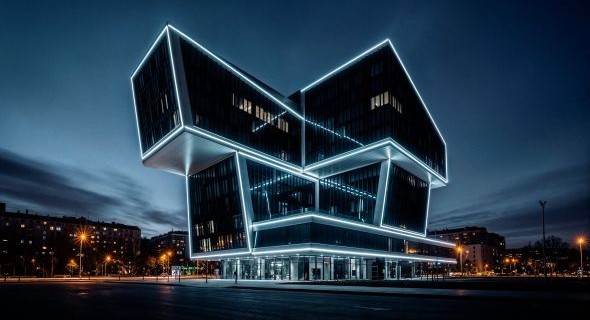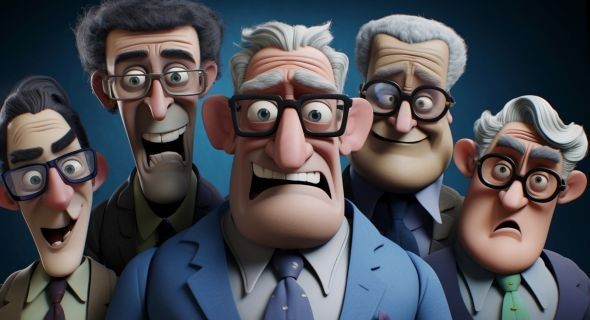
How to Design Eye-Catching Business Posters That Convert
Visual messages have huge power in the business world. Posters serve as a key, low-cost way to market. They grab attention and show off your brand. Good poster design helps people remember your name and draws them in.
Posters have changed a lot over time, but they still work. Even with so much online content, a strong poster can make a real impact. Think about more people walking into your store, showing up at your event, or buying your products.
Section 1: Understanding Your Poster's Goal and Audience
Defining Your Objective
Before you even start, ask yourself: what do I want this poster to do? Are you trying to sell something new, tell about an event, or just make people know your business better? Maybe you want them to visit your website. Knowing your goal guides every design choice you make.
Take a minute and write down your main goal. Be specific about what you hope to achieve. This step is super important.
Identifying Your Target Audience
Who are you trying to reach with this poster? Think about their age, what they like, and what problems they might have. If you know who you’re talking to, you can pick colors, pictures, and words that speak to them. You want your design to feel just right for them.
Imagine a poster for a local beer company. It would look way different than one for a serious business meeting, right? Each one speaks to a different crowd.
Key Information Hierarchy
What absolutely has to be on your poster? You need a clear main message, like a great offer or the event name. Then add important details: date, time, and where it is. Don't forget how people can act, like a call to action or your website. Make sure the most important stuff is easy to see first.
Guide your viewer's eye. Think about how people read, usually in a "Z" or "F" shape across the page. Place your key details along these paths.
Section 2: Core Design Principles for Effective Posters
Typography: Choosing the Right Fonts
Picking the right fonts is more than just picking pretty letters. Your fonts should fit your brand and be easy to read from far away. Use one font for headlines and another for smaller text. Try not to use more than two or three different fonts on one poster.
Always check your chosen fonts. Print them out in different sizes. This makes sure folks can read them no matter how big or small the poster is.
Color Theory and Psychology
Colors can make people feel certain ways and really get their attention. Stick to your brand colors so people know it’s you. Use colors that stand out against each other for easy reading. Strong contrast is key for words and backgrounds.
Did you know that 90% of quick judgments about products happen just because of color? It's true. Colors have a big effect on people.
Imagery and Visuals
Choose high-quality pictures or graphics that fit your message. A strong main image can grab attention fast. Don’t add too many images or things that make the poster look messy. Keep it clean and focused.
Always use images that look sharp, not blurry or pixelated. High-resolution files mean your poster will look great when it's printed big.
Layout and Composition
Think about how everything fits together on the poster. Good design balances elements, uses contrasting colors, and puts related things close to each other. Repeat design elements to create a sense of unity. Give your eyes a clear path to follow. Lots of empty space, called white space, makes your poster look cleaner and easier to read.
Look at movie posters or music festival ads. See how they put everything on the page? They use these tricks to make you look exactly where they want you to.
Section 3: Crafting Compelling Copy for Posters
Writing a Strong Headline
Your headline is super important. It has to catch the eye and tell people the main benefit or what's happening. Use strong words that get people excited. Make it short and impactful.
Your headline should tell people the "what" or "why" right away. Keep it brief and to the point.
Concise and Clear Messaging
Get straight to the point with your words. People looking at posters don't have much time. Use bullet points for important details if it helps. Don't use big, confusing words. Keep your message simple.
Read your words out loud. Does it sound good? Is it easy for anyone to understand? If not, make it simpler.
The Call to Action (CTA)
What do you want people to do next? "Visit Us Today," "Scan This Code," "Sign Up Now" — these are calls to action. Make this message stand out. It needs to be super easy for people to find.
Pick one clear thing you want them to do. Don't confuse people with too many choices.
Section 4: Technical Considerations and Production
Understanding File Types and Resolution
You'll hear about file types like JPG and PNG (raster) or AI and SVG (vector). Vector files are best for print because they won't get blurry when you make them bigger. For a good print, your images need to be high resolution, usually 300 DPI.
Always save your finished poster in a format ready for printing. This avoids problems later.
Print vs. Digital Poster Design
What looks good on a screen might not look the same when printed. Printers use CMYK colors, while screens use RGB. Colors can seem brighter on a computer or phone. Design differently depending on if it's for a screen or a real-life poster.
A poster for social media can have super bright colors. One for a large billboard might need more muted tones to look right.
Proofreading and Review
Before you print, check everything. Look for typos, grammar mistakes, or wrong information. It's easy to miss things when you've been staring at it a long time. Ask someone else to look it over too.
Print a small copy of your poster. Errors often jump out more on paper than on a computer screen.
Section 5: Tools and Resources for Poster Design
User-Friendly Design Software
Lots of tools can help you make a great poster. Programs like Canva and Adobe Express are easy to use for beginners. If you want more control, try Adobe Illustrator or Photoshop. Pick what feels best for you.
Many design pros suggest starting with simpler tools. They let you learn the basics before jumping into complex software.
Finding High-Quality Stock Photos and Graphics
You don't need to take every photo yourself. Websites like Unsplash and Pexels offer free pictures you can use. Sites like Adobe Stock or Freepik have even more options. Just make sure you understand the rules for using them.
Always double-check the license for any image or graphic you download. This keeps you out of trouble.
Understanding Print Shop Requirements
When you send your design to a printer, they'll ask for certain things. They need to know about "bleed" (extra space around the edges) and "trim marks." They'll also ask about color profiles. Getting this right means your poster prints exactly how you want it.
It's smart to call your print shop before you finish your design. Ask them what file type and settings they need.
Conclusion
Making a good business poster is a mix of smart planning, solid design rules, and clear messages. It's about knowing who you're talking to and what you want them to do. These choices guide every step of your design.
Remember, the best posters connect with people and make them act. Keep trying new things and learn from each poster you create. Soon, you'll be a poster pro.
